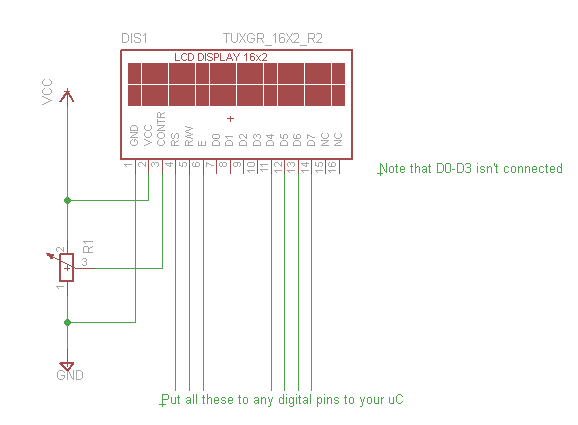

Lcd. Lcd.setup() // setup arduino and initialize LCD for the sake of demonstration change pin assignment */ # include // LCD module is 16 columns wide, use 4 pin mode * Simple hello world program in 4 pin mode. This means only four of the digital input lines( DB4 to DB7) of the LCD are used. Here is a Hello, World! program to get you started with the basics. In this project, the LCD module and arduino are interfaced in the 4-bit mode. Included with the package is also a README file and a few samples.

I have documented all of the functions and the LCD class rather thoroughly in there. The best way to get to know the library is to read the header file Lcd.h. $ cp -r lcdlib-0.X /path/to/arduino/hardware/libraries
4 BIT ARDUINO LCD LIBRARY DOWNLOAD
You can find a simple schematic in the download package, or here.ĭownload the source and extract it to the Arduino libraries directory. This is likely less reliable but if you have problems with the latest version you might try this one instead. The first release 0.1 does not require the RW pin to be connected to the arduino since it does not check the busy flag of the LCD.
4 BIT ARDUINO LCD LIBRARY CODE
You can always find the latest source code in here. The library is licensed under the GNU GPL. It also supports all documented features of the HD44780 controller including defining custom characters. This one lets you set the pin mapping (without modifying the source) and supports both 4bit and 8bit mode. There are currently a number of libraries and tutorials available for interfacing the Arduino with a standard HD44780 based LCD module, but they aren’t complete and you have to edit the source code to change pin numbers and use a different library for 4bit and 8bit mode.


 0 kommentar(er)
0 kommentar(er)
